Zoom
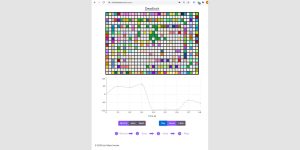
Cellular Seeds – Inexorable futures
Alejandra Marinaro (AR)
The Latinamerican Bioarte Lab (LatBioLab) explores more than 12 years of Bioart in Argentina. From ‘The Biosphere Project‘, Joaquín Fargas (AR), a simple way to show the world ecosytem, until ‘Colony‘, Darío Sacco (AR) that connects technology with biology and ‘Cellular Seeds - Inexorable Futures‘, Aleandra Marinaro (AR) that generates a new kind of “tech-life“. The Biosphere Project launches the adoption program of small worlds: ¨Adopt a World, adopt your World¨.

Cellular Seeds - Live Interaction with the artist
Alejandra Marinaro (AR)
Live interaction with the artist The existence of destiny is an inherent question about the human condition and many believe it to be unique. Meet the artist behind Cellular Seeds. Link to enter will be available in alejandramarinaro.com

Fargas open studio
Joaquín Fargas (AR)
Live interaction with the artist Visit the studio in real time and talk with the artist. Meet the robots Glaciator and Rabdomante. Link to enter will be available in joaquinfargas.com

Bioplastics and the New Materiality of Waste
Idil Akdos (NO)
How do we dispose of new materials safely? The CitiComPlastic team investigate how bioplastic waste can be safely transformed into compost. Join them to discuss how new materiality interfaces with environmental issues, and how we need to change our practices, structures, policies and perspectives to address this.
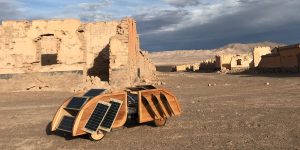
Dialogue Between Deserts
Joaquín Fargas (AR)
Two robots (Glaciator and Rabdomante) placed in two symbolic spaces ―Rabdomante in the Atacama Desert and Glaciator in Antarctica― aim to sensitize us to our human condition and our relationship with Earth Gaia. Glaciator Glaciator is a robot made in Antarctica. Made up of solar panels, it compacts and crystallizes snow, turning it into ice and then adhering it to glaciers to help them grow and regain the mass they lost as a result of thawing. Rabdomante Design and realization: Elia Gasparolo The combination of nature and technology allows Rabdomante to generate a new life cycle in the desert, drawing water from the atmosphere in the driest place in the world.
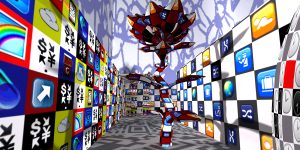
CNMAT ODOT
John MacCallum(USA), Jeff Lubow (USA)
In this workshop, we will provide a brief, practical introduction to odot, a dynamic, multi-paradigm programming environment that operates on Open Sound Control. Developed at CNMAT beginning in 2007, odot has evolved into a powerful and robust suite of tools useful in a variety of contexts, from gesture signal processing to computer-aided composition. During this workshop, we will discuss the current state of the package and the future of the project.
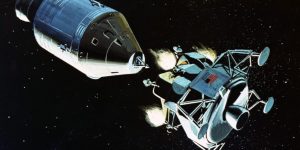
A new moon landing
Mehak Sarang
We are going to the moon again, and this time, to stay. But how should we do it this time and do it right?

Interplanetary Time, Communication, and Longevity
Che-wei Wang, Sands Fish
When distance is measured by light years, how do we learn from the past and make decisions for the future?

Wellbeing in Extreme Environment
Maggie Coblentz
How do we adapt to extreme conditions and how we care for each other? In the time of pandemic and isolation, can we learn from astronauts and people who have lived through hardships?

Uncomfortable Clothes #01
Fashion Frictions - Otto von Busch (Keynote)
There is a friction haunting fashion. Many of the basic qualities of design shares an uncomfortable fit with the way we interact with clothes: They are irrational. They are neither functional, nor user-friendly. Fashion is difference but also sameness, the new as well as the old, the cloning of idols as well as their rejection. It is a sense of pride as much as shame. And it is not uncommon that we feel an urge to lie to others about what we wear and our recent purchases. What is going on here? How are we to deal with the shallows and depths of fashion?

Re-FREAM round #1 presentations: Witsense & Jessica Smarsch
Witsense & Jessica Smarsch , hosted by Re-FREAM (INT)
Join this session to hear more about about Re-FREAM projects Lovewear by Witsense team and Constructing Connectivity by Jessica Smarsch.

Re-FREAM round #1 presentations: Julia Körner
Julia Körner (AT), hosted by Re-FREAM (INT)
Join this session to hear more about Julia Körner’s Re-FREAM project Digital Vogue.

Re-FREAM round #1 presentations: Ganit Goldstein
Ganit Goldstein (IL), hosted by Re-FREAM (INT)
Join this session to hear more about Ganit Goldstein’s Re-FREAM project WeAReAble.

Re-FREAM round #1 presentations: Youyang Song
Youyang Song (CN), hosted by Re-FREAM (INT)
Join this session to hear more about Youyang Song’s Re-FREAM project Cooking New Materials.

Re-FREAM round #1 presentations: Elisabeth Jayot
Elisabeth Jayot (FR), hosted by Re-FREAM (INT)
Join this session to hear more about Elisabeth Jayot (FR) and her Re-FREAM project Fragments Garments.

Re-FREAM round #1 presentations: Jef Montes
Jef Montes (NL), hosted by Re-FREAM (INT)
Join this session to hear more about Jef Montes (NL) and his Re-FREAM project Marinero.
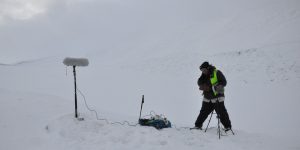
Creative Question Challenge: The Organ of Consciousness
Oswaldo Maciá (CO/UK), Chris Bean (IE), Emilia Leszkowicz (PL)
'Let us finish what we started'. This is how the UN introduces its first Sustainable Development Goal - to end poverty in all forms and dimensions by 2030. The 17 Sustainable Development Goals and their 169 targets have been described as a sprawling, misconceived mess of grandiose intentions. The title of the development agenda itself - 'Transforming our World' - oozes utopian ambition. It was adopted by 193 nations in 2015. Five years later and with ten years left, how do you think our world will transform?

Art for Future: CO-IMAGINATIONS and CO-PRODUCTIONS for TOMORROW’S WORLD
Filmuniversity Babelsberg KONRAD WOLF (DE), Institute for Art and Innovation (DE)
Workshop - The zone that enables life and makes the planet unique is thinner than previously thought. How should we shape the future positively when conventional visions mainly depict hopeless and bleak dystopias? What we collectively want, what we can imagine, is strongly shaped by the media that surrounds us in our visual-addictive century. Can we imagine futures that serve the common good as well as the regeneration of the planet? How can we create synergies to work less, but be productive together?
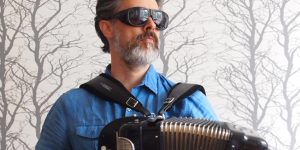
Machine folk music school
Bob L. T. Sturm (US)
“Machine folk music school” is led by Bob L. T. Sturm (US) via video conference. He teaches an AI-generated folk tune in the aural tradition. All musical instruments are welcome. (Come with your instrument!)
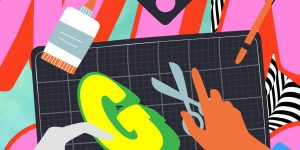
HOLD ON TO THE GOOD THINGS, IMAGINE THE BEST THINGS
An opportunity to reflect on COVID-19 and its effects on society, and speculate on what comes next. What roles do science, technology and art play here?


